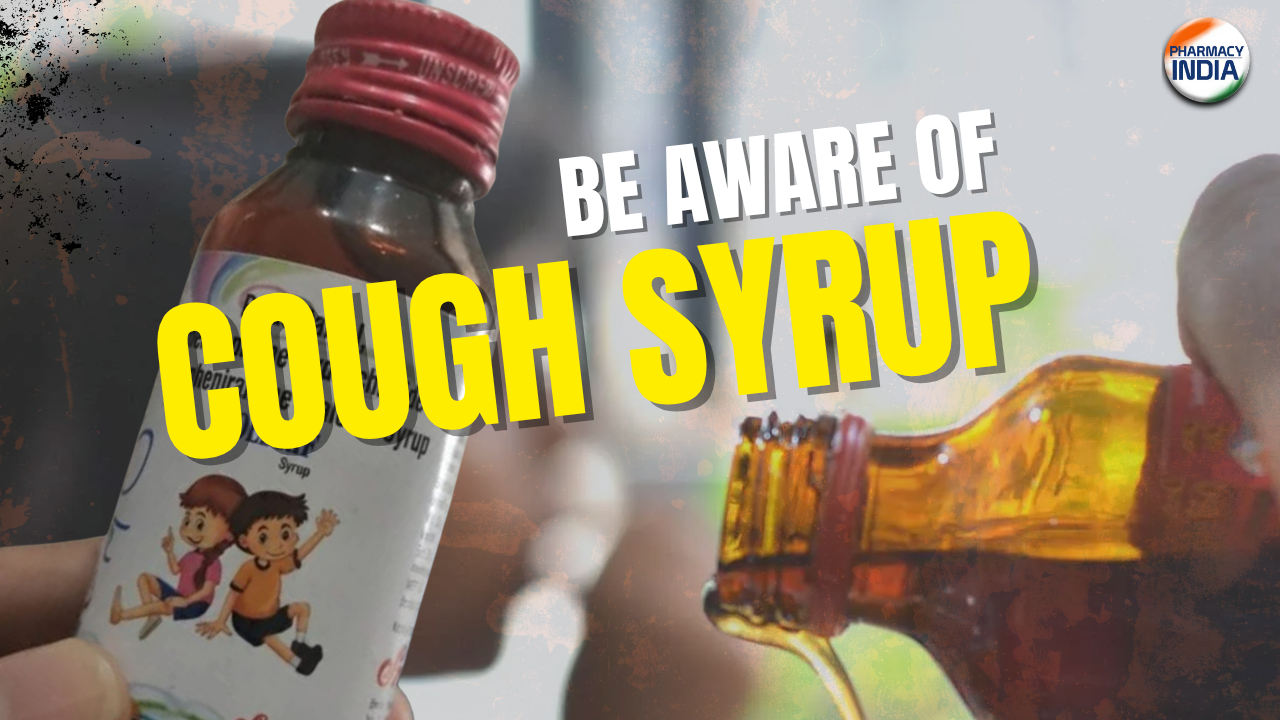Title: When a Cough Syrup Becomes a Death Sentence: The Coldrif Tragedy in Rajasthan & Madhya Pradesh
“Medicine should heal — not harm. But what happens when the very drug meant to ease a child’s cough ends up taking their life?”
Introduction
In early October 2025, news broke of a horrifying tragedy unfolding in the Indian states of Rajasthan and Madhya Pradesh: several young children had died, apparently after consuming a commonly used cough syrup called Coldrif. The deaths have triggered outrage, grief, investigations, and calls for systemic reforms in drug regulation and medical accountability.
In this blog post, I aim to piece together what is known so far — the sequence of events, the medical and regulatory findings, the questions that remain unanswered — and reflect on the larger implications. This is a developing story; new facts may emerge.
What Happened? The Timeline of the Crisis
Initial Reports & Deaths
-
The first suspicious deaths were reported in Chhindwara district of Madhya Pradesh, where several children under five years old, after being given Coldrif syrup for cold/cough symptoms, began showing signs of acute kidney injury.
-
By early October, Madhya Pradesh officials had confirmed at least 11 children had died in connection with this syrup.
-
In Rajasthan, too, deaths were reported in Sikar, Churu, and Bharatpur districts. A 5-year-old boy in Sikar reportedly consumed a dextromethorphan-based cough syrup (allegedly Coldrif) and died.
-
The state governments responded by suspending distribution of the suspect syrup batch and launching probes.
Discovery of Contamination
-
Laboratory tests on samples of Coldrif syrup identified the presence of diethylene glycol (DEG) in concentrations well above permissible limits — a dangerous industrial chemical known to be highly toxic, especially to kidneys.
-
For one batch, SR-13 (May 2025), DEG concentrations of ~ 48 % were reported by the Tamil Nadu drug control authorities.
-
The state of Madhya Pradesh formally banned the sale and distribution of Coldrif syrup, froze existing stocks, and also barred the use of other drugs from the same manufacturer.
Legal and Administrative Actions
-
A pediatrician, Dr. Praveen Soni, was arrested in Chhindwara, accused of prescribing the contaminated syrup to children.
-
FIRs were filed against both the prescribing physician and the manufacturer, Sresan Pharmaceuticals (Kanchipuram, Tamil Nadu).
-
In Rajasthan, the state government suspended the drug controller and halted distribution of medicines from a local manufacturer (Kayson Pharma) in light of the deaths.
-
The Centre issued advisory warnings, recommending that cough/ cold syrups should not be prescribed or dispensed to children under two years and that above this age, their use must be carefully evaluated.
Medical & Toxicological Aspects
Why Is Diethylene Glycol (DEG) Dangerous?
-
DEG is a solvent and industrial chemical (used, for example, in brake fluids and antifreeze), not meant for ingestion. Ingestion of DEG causes acute kidney injury, metabolic acidosis, and can lead to multiorgan failure and death.
-
The mechanism: after absorption, DEG is metabolized into toxic metabolites that damage renal tubular cells. The kidney’s inability to excrete these toxic intermediates leads to rapid deterioration.
-
Even small amounts, if highly impure or concentrated, can be lethal — especially in children whose organs are more vulnerable.
Clinical Presentation in the Affected Children
Based on news reports and limited official summaries:
-
Children initially showed common symptoms consistent with cold/ cough (fever, cough).
-
Over a short period, they developed reduced urine output, elevated creatinine and urea levels, indicating acute renal failure.
-
Some children died despite being referred to tertiary care (for example to Nagpur).
-
Kidney biopsies / tissue analyses reportedly confirmed tubular damage consistent with DEG toxicity in some cases.
Conflicting Findings & Need for Caution
-
Interestingly, not all sampled syrups in all labs showed contamination. For example, the Madhya Pradesh Drugs & Food Administration (MPFDA) claimed that 3 of 13 samples were free of contamination.
-
Some reports (e.g., NDTV) suggest that early tests found no toxins in particular samples, leading to disputes over whether the syrup was universally contaminated or whether other factors played a role.
-
These discrepancies emphasize the need for rigorous, transparent, forensically sound investigations.
Major Issues Raised & Questions That Remain
1. Quality Control & Regulatory Oversight Failures
-
How did a harmful batch of cough syrup reach the market undetected?
-
What lapses occurred in manufacturing, sampling, and batch testing procedures?
-
Why were the oversight and inspections insufficient to prevent this catastrophe?
2. Prescribing Practices & Medical Responsibility
-
Were physicians, especially in rural/ remote areas, adequately informed of risks or changes?
-
Did the prescribing physician exercise due diligence? In the case of Dr. Soni, authorities allege negligence.
-
How much of the blame lies in the chain of prescribing, distribution, and consumption without adequate checks?
3. Accountability & Legal Recourse
-
Will those responsible — whether in manufacturing, regulation, distribution, or prescribing — be held criminally liable?
-
Will the families of the victims be compensated fairly? (Some state governments have already announced ex gratia payments.)
-
Can the regulatory and judicial process move swiftly enough to deter future tragedies?
4. Systemic Reforms in Drug Safety
-
How can India strengthen surveillance of pharmaceutical manufacturing, especially for pediatric medicines?
-
Should independent, external auditing and random batch testing be expanded?
-
How to improve traceability in the supply chain — from manufacturer to retailer?
5. Communication, Transparency & Public Trust
-
The delays, conflicting lab reports, and lack of immediate public transparency risk eroding trust in medicines and the regulatory system.
-
Families and communities deserve clarity: what exactly caused their children’s deaths?
-
Postmortems, toxicology reports, and independent third-party audits should be made public.
Broader Context & Comparisons
-
This is not the first time that contaminated cough syrups have caused deaths. In 2022, over 70 children died in Gambia after ingesting Indian-manufactured syrups containing diethylene glycol.
-
Similar tragedies have occurred elsewhere (e.g. in Uzbekistan) where pediatric formulations were found adulterated.
-
These past events should have acted as warnings: tighter global surveillance of pediatric medicines is necessary.
What Should Be Done: Recommendations
-
Fast, Forensic Investigation
-
Ensure independent, transparent autopsies and toxicology of deceased children.
-
Publish detailed laboratory findings, batch data, supply chain maps.
-
-
Strengthen Regulation & Oversight
-
Conduct surprise inspections at pharmaceutical plants, especially those making pediatric formulations.
-
Increase penalties for noncompliance, adulteration, or negligence.
-
-
Mandatory Batch Testing & Traceability
-
Each batch must be tested by government / approved labs before release.
-
Use barcodes or tracking systems to trace each bottle’s journey.
-
-
Physician & Pharmacist Training
-
Sensitize doctors and pharmacists on risks of pediatric cough/cold medicines, signs of toxicity.
-
Discourage over-the-counter dispensing without oversight, especially for young children.
-
-
Stricter Guidelines on Pediatric Use
-
As the Centre has already advised: cough and cold medications should not be used for children under two years, and above that only with caution and medical oversight.
-
Reevaluate whether combination cough syrups should remain in general circulation.
-
-
Support & Justice for Affected Families
-
Provide full compensation, medical support, legal aid to grieving families.
-
Hold responsible persons and institutions accountable through legal action.
-
-
Public Awareness & Monitoring
-
Inform communities to stop using suspicious cough syrups (e.g. Coldrif batch SR-13).
-
Set up hotlines for adverse event reporting in children.
-
Closing Thoughts
The Coldrif tragedy is a harrowing reminder that medicine is not just the realm of clinical decisions — it is deeply embedded in manufacturing, regulatory systems, and social trust. When any part of that chain fails, children pay the highest price.
India, as a major pharmaceutical producer, must now prove that this horror will not be in vain. It must emerge with stronger safeguards, accountability, and renewed public faith — so that no child is again felled by the very medicine meant to heal.






